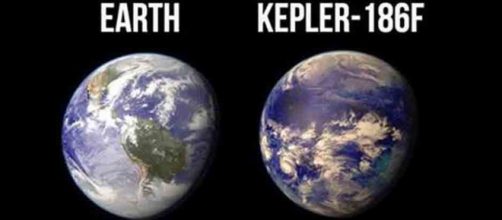A planet named Kepler-186F is currently considered the most similar planet to Earth. Here's what researchers say about the possibility of life on this planet, according to sciencechannel.com and descopera.ro
On 7 March 2009, NASA was launching the Kepler space telescope on a mission to search for planets that can support life. While analyzing from the ground the data obtained using the spacecraft the astronomers have detected what appeared to be the cosmic object which they were looking for.
Planet similar to Earth
The new planet discovered has a size similar to Earth.
Moreover, is was located at the right distance from the star around which it orbits, being placed in the so-called "circumstellar habitable zone." Specifically, the planet's temperature is allowing the existence of liquid water on the surface.
For the astronomer Sarah Vickers, the discovery of the new planet, which was named Kepler-186F was like a dream come true. Despite the many similarities between our planet and the new cosmic object, the researcher found out that there are, however, very important differences: the Star around which the planet orbits is only half the size of the Sun and the temperature is much lower than the temperature of the Sun .
Atmosphere similar to Earth's atmosphere
The results of the studies conducted on Kepler-186F have led some researchers to believe that the planet could have an atmosphere similar to the Earth's atmosphere and therefore it could support life. Sarah Vickers says she thinks light could be red on this planet, the oceans could be orange, but the vegetation might develop harmoniously because it is exposed to infrared radiation.
Scientists went further and started to believe that Kepler-186F's environment could support complex organisms like the amphibians from Earth. Moreover, there are voices that argue that the planet could host intelligent beings such as humans, or perhaps even superior beings in evolutionary terms.
The experts tell us that, although life could exist on Kepler-186F, a very long time will pass until humanity will discover it. Until then, experts take into account all the assumptions that they have and continue to improve their database obtained with the telescope they launched in 2009.

